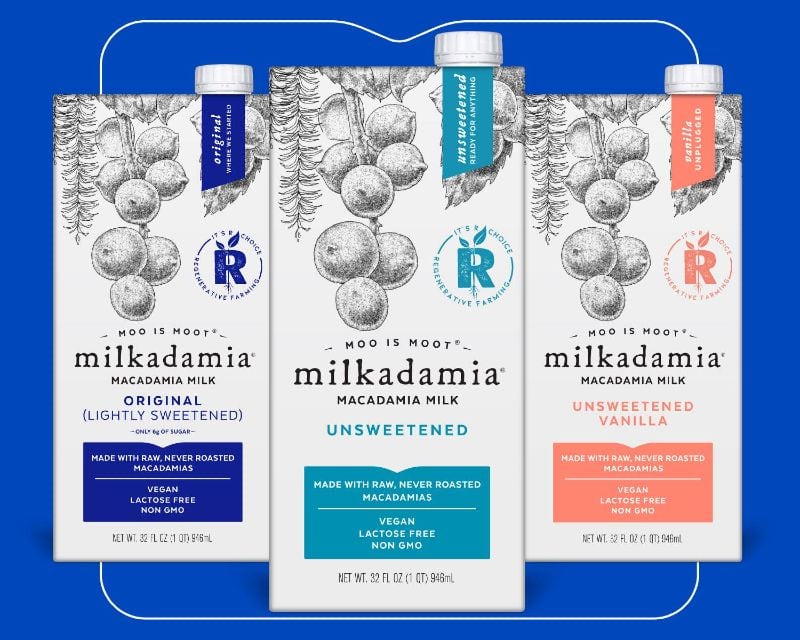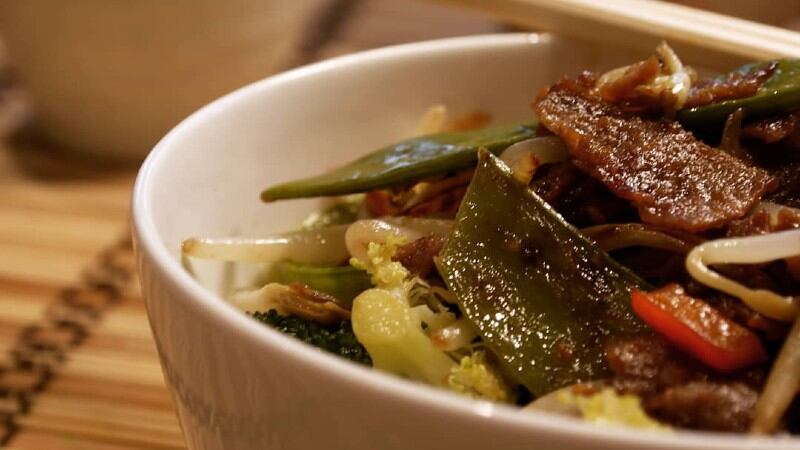The macadamia nut is the most expensive nut in the world at US$25 per pound (450g), US$2 more than second-placed pine nuts at US$23 and a whopping US$11 more than the third-placed almonds at US$13.99. This is attributed to the nuts’ extremely long production process – trees could take up to 10 years to produce nuts.
This high cost means that milk made from macadamia nuts is more expensive than others, including the third-most expensive but vastly more common almonds. Even in its home ground of the United States, milkadamia’s products are significantly more expensive.
According to Go Dairy Free, these come in at around US$5.49 per 32 ounce (946ml) carton as compared to other plant-based milks like Almond Breeze (US$2.99/32 ounces) or even the relatively newer Hemp Yeah! Hemp Milk (US$3.67/32 ounces).
Based on this higher cost, it would be understandable if milkadamia found this to be a challenge when attempting to conquer the Asian market, where any higher pricing relative to other products is known to be a deterrent for consumers – but the company is confident that it will find a niche based on its premium and sustainability focus.
“Our products speak to consumers who purchase premium products because of the added lifestyle and wellness bonus they provide,” milkadamia CEO Jim Richards told FoodNavigator-Asia.
“[milkadamia] customers are willing to spend a little more for the badge of eco-pride [and] retailers also want to stock our product, as the milk has a halo effect [due to our] eco and regenerative macadamia farming credentials [and this] elevates the retailer to a more sustainable proposition
“Asian consumers are behind in the plant based journey, but they’re not behind in enjoying premium products, and macadamia products like ours have that. A lot of younger Chinese consumers are premium purchasers, so we believe a product like milkadamia will hold strong appeal for these consumers.
According to Richards, milkadamia’s products have already ‘taken off’ in markets such as China, Japan and South Korea as well as Australia, driven by the existing popularity of macadamia nuts in these markets.
“Our hurdle for APAC expansion is not related to demand or cost, but rather supply - we [currently] don’t supply our product in any market besides the US currently, [but rely on] distributors in other countries around the world,” he said.
“So over the coming years, we will continually evaluate our supply options with a view to introducing the product to more markets.”
Similar to in the US, milkadamia’s range of macadamia-based milks are also priced significantly higher here in Asia than other plant-based milks – as an example, a 32-ounce carton goes for around SGD11 (US$8.05) on Ubuy Singapore whereas the same-sized carton of Almond Breeze almond milk is about SGD5.83 (US$4.27).
The milkadamia product range comprises 10 macadamia milks and creamers, as well as a plant-based butter made from macadamia oil.
Not competing with other plant-based milks
Part of Richards’ confidence likely stems from the fact that he does not view his macadamia-based milks as being in competition with other plant-based milks – and does not intend to compete with these products in terms of price either.
“For us, macadamia milk sits in a category of its own. Millions of people are reducing their meat and dairy intake every day to align with their personal values and beliefs, and these are the people that we consider our target market,” he said.
“We always try to develop products that ‘surf the culture wave’, meaning that we don’t want to develop something that is already too popular [but instead] develop products that can ride a wave when it is just beginning - This is why we’ve chosen macadamia milk as we believe it will be the next huge product to lift off on this cultural wave.”
That said, the firm is just as conscious as many other players in this space that these non-dairy milks still need to taste good and similar to traditional dairy if it hopes to really take off, especially in Asia.
“The taste and consistency of dairy milk is most familiar to a lot of [consumers, even those reducing meat and dairy intake, so we focused on developing] a product that had the best taste possible and was not dissimilar to traditional dairy products,” said Richards.
“After a bit of testing, we worked out that raw macadamias, not roasted, provided a really creamy consistency [and] aligns more closely with the creaminess of traditional dairy milk, which makes it a much easier transition for consumers going plant-based.”
Cost really not an issue?
Despite Richards’ optimism, experts in the Asian plant-based space, including from China, have agreed that product cost and pricing is a very significant factor for any firm to achieve success in the region, and ignoring this could be problematic.
Thai plant-based meat firm Let’s Plant Meat previously commented that it is ‘unlikely that consumers would accept a [new] product’ if it is perishable and expensive, and China’s Dao Ventures Co-Founder Tao Zhang has also said that: “Product taste, price and acceptability must be high [to gain acceptance in China].”
So only time will tell whether milkadamia’s premium and sustainable positioning will work here, but at the moment, but at the moment an emphasis on health and wellness and nutrition as compared to sustainability seems to be a recommended approach when approaching Asia.
“In Asian markets the move to plant-based is driven more by personal benefit and food safety and quality needs than eco-concern,” Australian Macadamias Market Development Manager Jacqui Price told us.
“That said, traditional diets across the region are well placed to embrace the plant-based trend and we can see pockets where the trend is accelerating so we expect to see interest in APAC meet and exceed the demand for plant based in the West over the coming years.”





